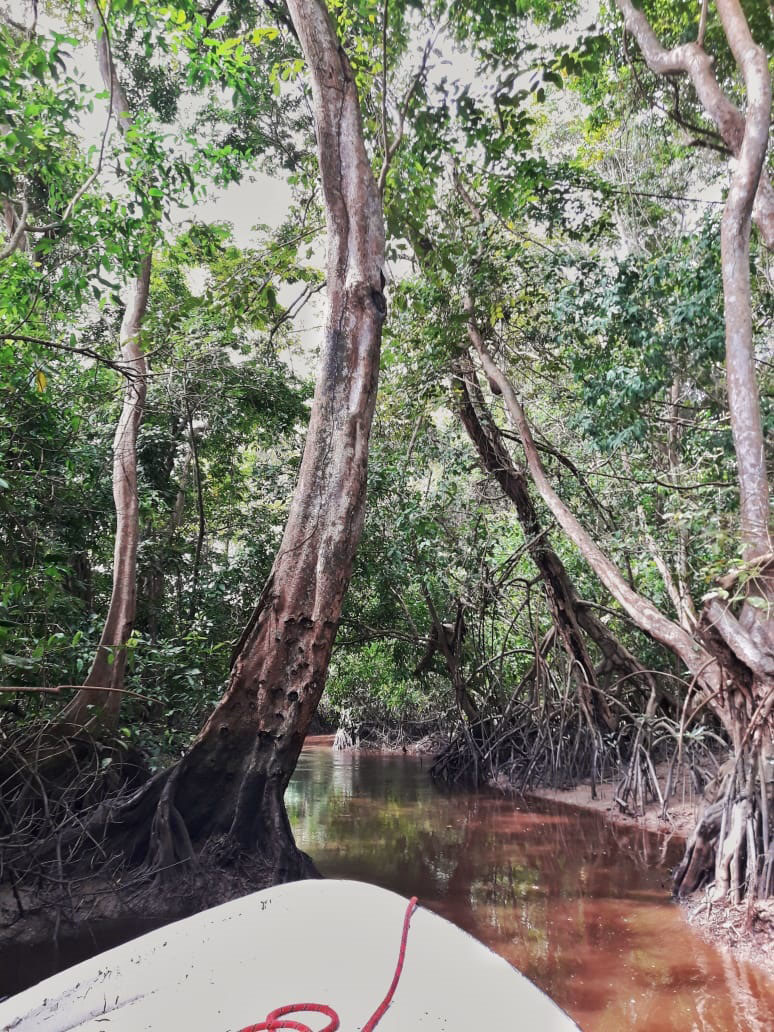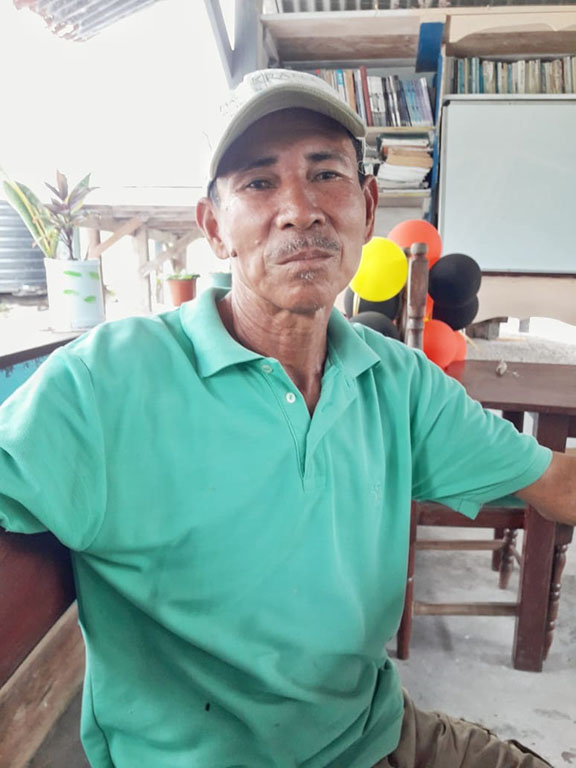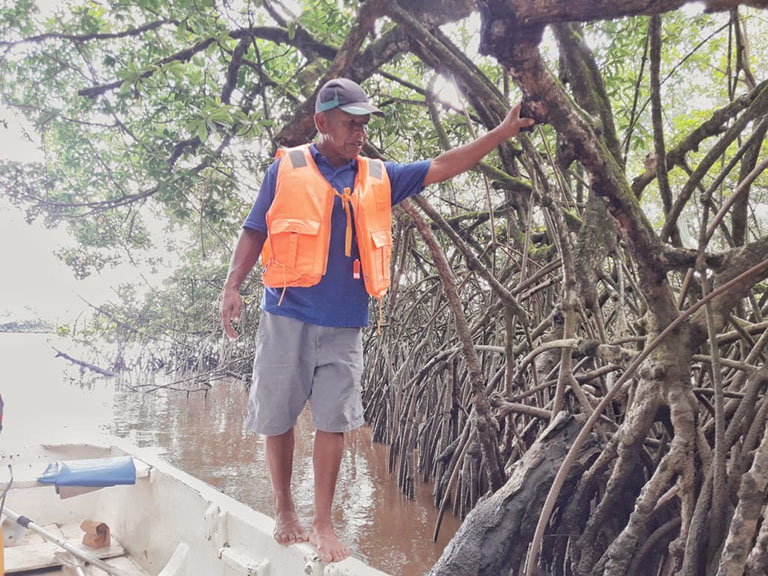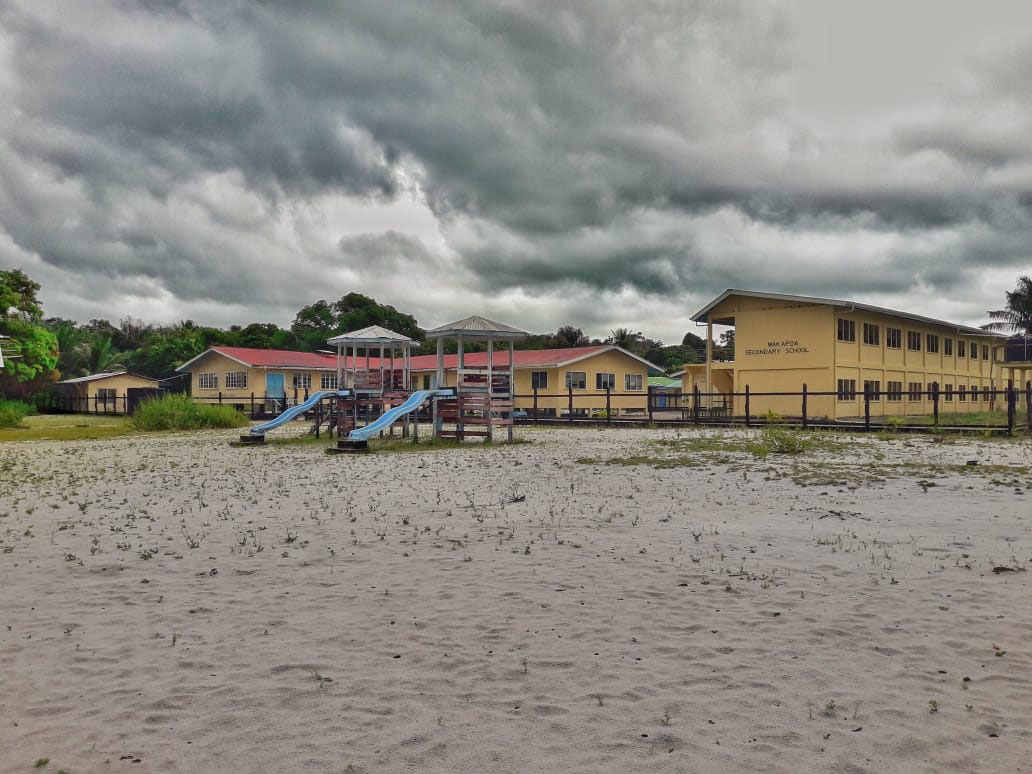Bordered by Akawini to the south and Manawarin to the west, Wakapoa is by far one of the most peculiar indigenous villages in Guyana and possibly in the world as it consists of twenty inhabited islands that is home to its two thousand plus residents who belong to the Arawak/ Lokono and Warrau tribes.
The village got its name from the Wakaqua birds that frequented the area while the original Arawak name Wakapau was also said to have derived from the sounds the women hands made when they would bathe in the large ponds early in the morning.
The people depend on the farming of cassava, eddoes, bananas, as well as fishing, for their livelihood. Logging is also done in the village. It’s one of the main means by which the village council earns royalties
The main inhabited islands are Curemeru (after the curemeru berries), Massarie, Coporoto, Makouria (which translates to island without quakes), Crow Island (many crows), Yacouri, Mirie, Paripi, Assakabura, Moro, Kamadankoro, St. Lucian’s Mission (which was once called Cocorite owing to its cocorite trees), Yarashirima, Waramuri, Arasaro, and Lemong. The other islands are only inhabited by one family each. One of the best things about having so many settlements is that every year, the different islands take turns hosting the heritage day. This year, however, that has been cancelled due to the COVID-19 pandemic.
The pristine jungle and grassy verges of the creek is the natural habitat for jaguars, giant otters, fresh water fish, a diversity of birds, wild hogs, tapirs and caimans that are often seen sunbathing along the banks of the creek. The people of Wakapoa are not into hunting despite the variety of wild meat. Since the village is situated almost eight miles away from the Atlantic Ocean, many persons prefer to fish in the ocean. They eat mainly cassava bread and Tuma pot, which in the Arawak language is referred to as Khali Cota.
Boat captain David Emanuel transported us to the community. He took a shortcut (called an itabo in Arawak) that was lined with mangroves with their skeletal roots projecting out of the ground. Through the shortcut, the trip from Charity takes three and a half hours (the longer route takes four hours) with the 15-horse-power engines, which was exactly what Emanuel transported us in. The boats powered by the seventy-five-horse-power engine, it was said, would take an hour through the shortcut from Charity to Wakapoa. A signboard along the shortcut reminded visitors to observe COVID-19 guidelines. The sky was overcast and we stayed dry until we got out of the shortcut and then the rains came. With no shed over our heads, and just a piece of vinyl available to keep us dry, we arrived at Wakapoa soaked to the bone.
We met Lloyd Pereira, deputy toshao of Wakapoa. Pereira is responsible for half of the islands while the toshao, Howard Cornelius, takes care of the other half. Prior to the current toshao’s term, Pereira served as toshao for three terms, a total of nine years.
According to Pereira, half of the population which includes him and Emanuel, speak their respective languages. Currently there is a revival of the language which has been happening in pockets throughout the community where people would sit together and chat in their respective indigenous languages. Wakapoa, he believes, is the only village where most of the people living there speak Arawak. He expressed his satisfaction at hearing COVID-19 guidelines being broadcast over the radio in various Indigenous dialects on a daily basis.
The Wakapoa Nursery, Pri-mary and Secondary schools can be found on the island of St Lucian’s Mission. It is one of three islands with schools. In times past, the mission had the only school in all of Wakapoa. During the rule of the British, there was only one school which was ran by the Catholic Church. The school was called St. Lucian’s Mission, which the island was named after. The mission is the central point of Wakapoa.
Each household has benefitted from solar panels as their source of electricity. As it relates to water for drinking purposes, most people depend on the rain. In the decades past, the indigenous people had depended on their ponds. Pereira explained that after a couple of days of using the water in the pond, they would bail the pond and more water would seep through the earth. About ten percent of the people here still drink the creek water.
Speaking of the distance from the community to the Essequibo Coast, Pereira recalled that in the early eighties, all they had were canoes for transportation. “I had to go for an interview at Anna Regina to go to training college. It was myself and two other persons. So the interview was the next day at 9 in the morning at Anna Regina. We got the message really late and we had to leave at 7 the night before to make it in time for the next day. For the whole night we paddle to Charity. When we got to Charity, it had vehicles running. In those days it was what was called the Tapir,” he recalled. Owing to the distance to the community, a return trip to the village from Charity when chartering a boat comes at the cost of $50,000.
Commenting on his concerns about education for children in Wakapoa, Pereira said that he would like it to be tailored for the children there, and since they are not fortunate enough to have all the resources for a proper education, they should not be given the same examinations. He questioned, “How is it you bring lab questions in science examinations but there are no labs available to the youths?” He would like to see development in the sector for his children so that they can be on par with the rest of Guyana’s children.
However, the call for development did not stop there, as Pereira further explained that many of their roads were built by hand. He wondered why it was that they could not be provided with their own excavators to make work easier for them.
The deputy toshao is of the opinion that the indigenous people are not treated equally. He related that he often reminds his daughter that she must make good grades in school as it is her only way out of the life provided for his people. His youngest daughter is currently attending the Anna Regina Multilateral Secondary school.
COVID-19 has fortunately not impacted Wakapoa as it has the rest of Guyana. However, the cancellation of the heritage day this year has prevented many persons from engaging in their annual sales of craft, food, and wine. Those who sell cassava bread and wine on a regular basis have also been affected.
Even as we prepare to leave Pereira, the smell of roasted coffee emanated from a small outside kitchen. The man and his family also plant coffee and sells it for a living.
(To be continued next week…)





